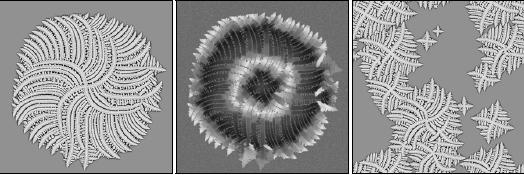
László Gránásy1,2, Tamás Pusztai1, T Börzsönyi
1Institute for Solid State Physics and Optics, Wigner Research Centre for Physics, P.O. Box 49, Budapest H-1525, Hungary
2BCAST, Brunel University, Uxbridge, Middlesex, UB8 3PH, United Kingdom
We review our recent modeling of crystal nucleation and polycrystalline growth using a phase field theory. First, we consider the applicability of phase field theory for describing crystal nucleation in a model hard sphere fluid. It is shown that the phase field theory accurately predicts the nucleation barrier height for this liquid when the model parameters are fixed by independent molecular dynamics calculations. We then address various aspects of polycrystalline solidification and associated crystal pattern formation at relatively long timescales. This late stage growth regime, which is not accessible by molecular dynamics, involves nucleation at the growth front to create new crystal grains in addition to the effects of primary nucleation. Finally, we consider the limit of extreme polycrystalline growth, where the disordering effect due to prolific grain formation leads to isotropic growth patterns at long times, i.e., spherulite formation. Our model of spherulite growth exhibits branching at fixed grain misorientations, induced by the inclusion of a metastable minimum in the orientational free energy. It is demonstrated that a broad variety of spherulitic patterns can be recovered by changing only a few model parameters.


